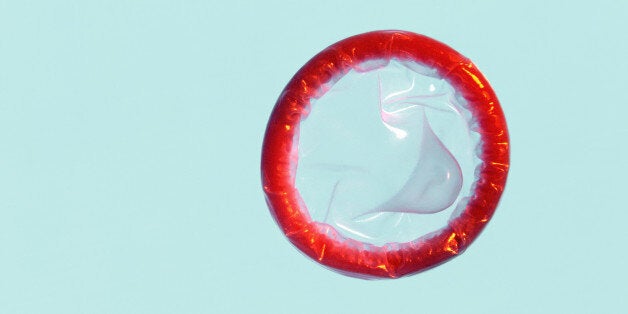
A groundbreaking new condom that uses an antiviral gel as added protection against HIV, herpes and HPV may soon hit the shelves in Australia. But some experts are wary of the effectiveness of VivaGel, the lube that makes the condom so potent against viral sexually transmitted infections.
The VivaGel condom, made by pharmaceutical company Starpharma, is the only condom of its kind to incorporate the antiviral compound, asodrimer sodium, in its lubricant. Lab tests show that it can "inactivate" up to 99.9 percent of HIV, herpes (HSV) and HPV, according to the company's press release.
But Dr. Anna-Barbara Moscicki, a pediatrics professor at University of California, San Francisco and an HPV expert, advises caution. She researched VivaGel as an intravaginal cream for women who wanted to protect themselves from viruses without using a condom, and found that it caused mild irritation and low-grade inflammation in study participants after two weeks of twice-daily use.
That's more serious than it sounds: Inflammation is the body's response to an irritant or pathogen. When a part of the body is irritated, the body sends protective white blood cells like neutrophils and lymphocytes to the site of the injury to begin healing it.
But it's those very cells, explained Moscicki, that the HIV virus uses to replicate itself and spread throughout the body. If the lubricant irritates a vaginal wall to the point of inflammation, the body could send white blood cells straight to the site where they are most likely to come into contact with the HIV virus.
Inflammation also breaks the skin barrier down, making it easier for HPV to access the basal skin cell layer and infect a person, said Moscicki.
Based on her 2011 study, as well as another one with similar results, Moscicki hopes that Starpharma has worked out the kinks that caused inflammation in study participants.
"In theory, the drug looks very promising," Moscicki told the Huffington Post. "But I hope the condom isn't causing inflammation to the woman or the man."
In an email to The Huffington Post, Starpharma CEO Jackie Fairley clarified that VivaGel concentration levels in the condom lubricant differed from the gels that have been researched in past studies. For instance, while Moscicki's trials involved 3 percent VivaGel, Starpharma used 1 percent VivaGel in clinical studies involving over 1,000 participants, said Fairley.
Starpharma found no difference in safety between the 1 percent VivaGel concentration and the placebo, and the concentration of the lubricant in the condom, at .5 percent, is "significantly lower" than even the test concentration, Fairley explained.
Other studies show that correct and consistent condom use is already "highly effective" against HIV transmission and other STIs, according to the Centers for Disease Control and Prevention. But slippage, breakage and forgetting to use a condom could still factor into what's called "real world" use, which is why no one can claim condoms are truly 100 percent effective against the spread of STIs.
Moscicki wasn't privy to any of Starpharma's research on the product, and concedes that perhaps the amount of VivaGel on the condom is so small that it might not have the same harmful side effects as using VivaGel alone as a vaginal cream. If so, said Moscicki, VivaGel condoms could be an exciting new upgrade from the typical latex condom, which doesn't have a 100 percent effectiveness rate against HIV and other STIs.
"My guess is that it would be better than just a condom alone -- provided it doesn't irritate users," she concluded.
Dr. Jeffrey Klausner, a professor of medicine and public health at UCLA, is more skeptical about the VivaGel condom.
"Given that condoms have been considered dual protection for decades -- correct and consistent use is highly protective against a variety of STDs like HPV, herpes and HIV, as well as chlamydia, gonorrhea and trichomoniasis -- it's not immediately clear to me the likely added benefit of antiviral gel to a condom lubricant," Klausner wrote in an email to HuffPost.
"The most important thing about condoms is to make them accessible and get them used," he continued. Condoms alone haven't been shown to control STDs in some at-risk populations, Klausner said, so he doesn't expect the VivaGel condom to have a significant public health impact, though it may have some advantage for individual users.
The VivaGel condom was just approved for use by the Australian Therapeutic Goods Administration (similar to the U.S. Food and Drug Administration) this week, and will hit the market once the condom is listed with the Australian Register of Therapeutic Goods -- a process that is only expected to take a few weeks, said Fairley.
Once registered, the condom will be sold in Australia under the brand LifeStyles Dual Protect. The company also has plans to introduce the product to other markets in Asia, North America and Europe.